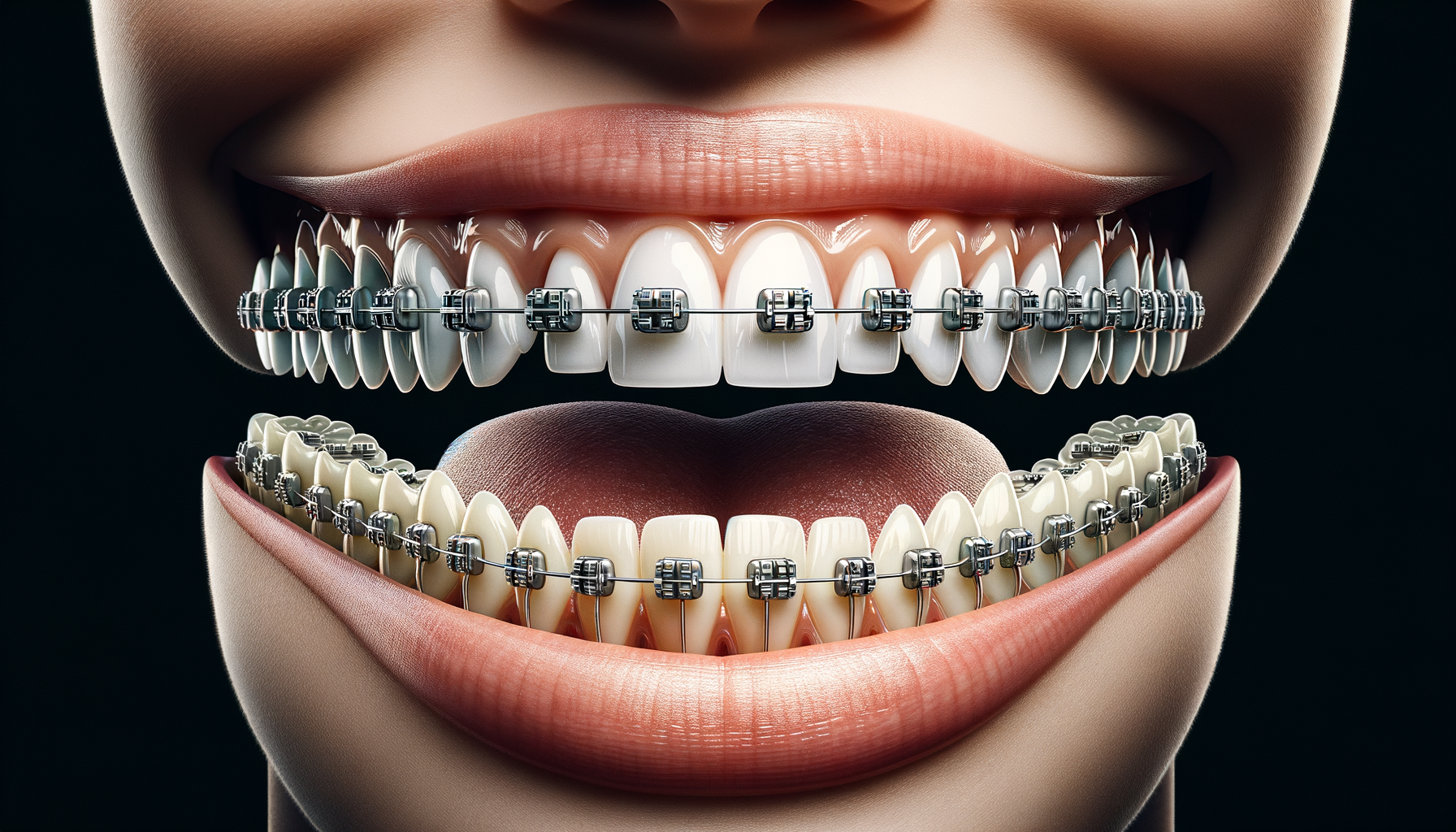Understanding the Basics of Braces
Braces are orthodontic devices used to correct misaligned teeth and jaws. They are a common solution for individuals seeking to improve their dental health and aesthetics. The primary components of braces include brackets, archwires, and bands, each playing a crucial role in the alignment process. Brackets are attached to the teeth and serve as anchors for the archwire, which applies pressure to guide teeth into their desired positions. Bands are used to secure the brackets and archwire in place.
There are several types of braces available today, including traditional metal braces, ceramic braces, and clear aligners. Metal braces are the most common and are known for their durability and effectiveness. Ceramic braces function similarly but are less noticeable due to their tooth-colored appearance. Clear aligners, on the other hand, offer a more discreet option and can be removed for eating and cleaning.
The process of getting braces typically begins with a consultation with an orthodontist, who will assess the patient’s dental needs and develop a personalized treatment plan. The duration of treatment varies depending on the complexity of the case but generally lasts between one to three years. Regular follow-up appointments are necessary to adjust the braces and ensure progress is being made.
The Benefits of Braces
Braces offer numerous benefits beyond just improving the appearance of one’s smile. One of the primary advantages is the enhancement of oral health. Misaligned teeth can contribute to various dental issues, such as tooth decay, gum disease, and difficulty chewing. By correcting alignment, braces can help prevent these problems and promote better oral hygiene.
Moreover, braces can improve speech and chewing ability. Misalignment can affect the way a person speaks and how efficiently they chew food. By aligning the teeth and jaws, braces can lead to clearer speech and more effective chewing, which in turn aids digestion.
Another significant benefit is the boost in self-confidence that often accompanies a straighter smile. Many individuals feel self-conscious about their teeth, and undergoing orthodontic treatment can lead to improved self-esteem and a more positive self-image.
Challenges and Considerations
While braces offer many benefits, there are also challenges and considerations to keep in mind. One of the most common concerns is the discomfort associated with wearing braces. The pressure exerted by the archwire can cause soreness, particularly after adjustments. Over-the-counter pain relievers and orthodontic wax can help alleviate discomfort.
Maintaining oral hygiene can also be more challenging with braces. Food particles can easily become trapped, increasing the risk of cavities and gum disease. Patients are advised to brush and floss regularly and may need to use special tools, such as interdental brushes or water flossers, to clean around the brackets and wires.
Cost is another factor to consider. Orthodontic treatment can be expensive, and insurance coverage varies. It’s important to discuss payment options and potential financial assistance with the orthodontist’s office.
Innovations in Orthodontic Treatment
The field of orthodontics has seen significant advancements in recent years, offering patients more options and improved outcomes. One such innovation is the development of self-ligating braces, which use a specialized clip instead of elastic bands to hold the archwire in place. This can reduce friction and result in shorter treatment times.
Another advancement is the use of 3D imaging and computer-aided design (CAD) in treatment planning. These technologies allow orthodontists to create highly accurate models of a patient’s teeth and develop customized treatment plans. This can lead to more precise results and a better overall experience for the patient.
Clear aligners have also gained popularity due to their discreet appearance and convenience. These aligners are custom-made for each patient and gradually shift teeth into place. They can be removed for eating and cleaning, making them a popular choice for adults and teens alike.
Choosing the Right Orthodontic Option
Selecting the appropriate orthodontic treatment depends on various factors, including the individual’s dental needs, lifestyle, and budget. Traditional metal braces are often recommended for complex cases due to their effectiveness and durability. For those seeking a less noticeable option, ceramic braces or clear aligners may be more suitable.
It’s essential to consult with a qualified orthodontist to determine the best course of action. During the consultation, the orthodontist will evaluate the patient’s dental condition and discuss the available options. They will also explain the pros and cons of each type of braces and provide a detailed treatment plan.
Ultimately, the decision should be based on a combination of professional advice and personal preferences. By considering all factors and working closely with an orthodontist, patients can embark on a successful journey toward a healthier, more confident smile.




Leave a Reply